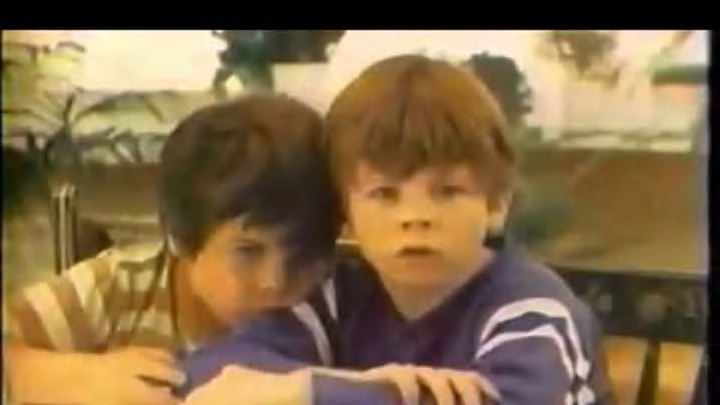Say the phrase Mikey likes it to anyone between the ages of 40 and 100, and chances are good they’ll get the reference. It immediately brings to mind an incredibly popular commercial from the 1970s of a cute, round-faced toddler shoveling down Life cereal.
The slogan was never actually uttered in the original 1972 commercial, though. Instead, it’s a blend of the actual verbiage of the ad, which starred actor John Gilchrist, then nearly 4 years old, as Mikey.
In the clip, Gilchrist’s two real-life brothers, Michael and Tommy, push a bowl of the mysterious, supposedly good-for-you cereal at him, saying, “Give it to Mikey. He won’t eat it. He hates everything.” When the little guy ends up chowing down, the more antic of the two older brothers exclaims, “He likes it! Hey Mikey!” before an announcer intones, “When you bring Life home, don’t tell the kids it’s one of those nutritional cereals you’ve been trying to get them to eat. You’re the only one who has to know.”
First introduced in 1961, Life—a brown, checkered, square cereal produced by Quaker Oats and mainly made of oats, corn, whole wheat flour, and some added sugar—was far from the first breakfast cereal. Those had been around since the 1860s, when health zealots sang the praises of eating mostly flavorless bran, oats, and corn flakes. But Life, billed as having “the most useful protein ever in a ready-to-eat cereal,” was part of the larger movement toward food convenience, with cereals like Life, Sugar Smacks, and Cocoa Puffs debuting in the ‘50s and ‘60s. And the impact that the Mikey Likes It slogan would end up having on pop culture would stretch far beyond the breakfast aisle at the grocery store.
How “Mikey” Came to Be
Life’s first mascots were little sprites who extolled the virtues of “the good oat cereal,” which included “tiny bite-sized pieces of shredded oats with sugar crystals locked inside.” But in the early ‘70s, following some work by the ad firm Doyle, Dane and Bernbach, Quaker Oats launched the “Little Mikey” commercial, which would run from 1972 to 1986, becoming one of the longest-running advertisements in TV history. Millions of people saw Mikey scoop up spoonful after spoonful over those 14 years, making Gilchrist’s mini-mug one of the best-known faces on television at the time.
Gilchrist and his six siblings appeared in 600 or so commercials over the course of their young lives—John alone did about 150, and the “Mikey” ad was one of his first—though only this Life commercial really popped off. Gilchrist’s parents also refused press requests for their son, which might have been part of how he became the subject of urban legends. In the ‘70s, for instance, rumors started to swirl that he’d died from a stomach rupture after ingesting a lethal combination of carbonated soda and the fizzy candy Pop Rocks. That’s impossible, of course—the combination would maybe give you a slight tummy ache if anything at all—but the schoolyard rumors were so widely believed that it seriously impacted sales of the once-skyrocketing candy.
In 1979, Gilchrist’s own mother received a condolence call from a stranger offering sympathies for the loss of her son, to which she reportedly replied, “He just came home from school.” General Foods, which owned Pop Rocks at the time, appealed to Gilchrist’s parents, offering to pay him to appear in a commercial disputing the claims, but they refused. The child star was still under contract with Life and the company threatened to pull the deal if he did the Pop Rocks campaign.
General Foods discontinued the treat in 1982, but the rumors about Pop Rocks’ supposed danger persisted for years. They’ve since come back to stores, though, should you want to tempt (a totally fictional) fate.
As for Gilchrist, he is still very much alive and liking things in New York, where he parlayed his early commercial fame into a career in advertising sales, first in radio, then at ESPN, and now for MSG Networks, where he has worked as director of media sales since 2011.
